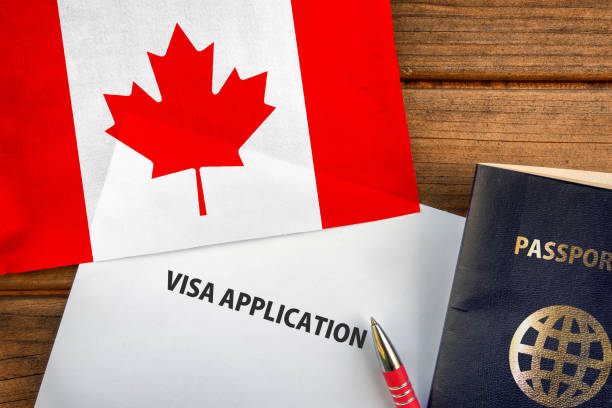
Provinces Begin Inviting Candidates for Provincial Immigration in 2025 Amidst Reduced Allocations
As the new year unfolds, two Canadian provinces, Manitoba and Ontario, have kicked off 2025 with draws to invite candidates to apply for provincial nominations under their respective Provincial Nominee Programs (PNPs). While the process begins with some optimism, it is important to note the significant reductions in the overall allocation of spots for provincial immigration. This change, as part of the federal Immigration Levels Plan 2025-2027, is impacting the number of nominations each province can issue.
Table of Contents:
- Introduction to Provincial Nominee Programs (PNPs) in 2025
- Manitoba Leads the Charge with PNP Draws
- Ontario’s Targeted Invitations for Economic Mobility Pathways
- Impact of Reduced PNP Allocations on Provincial Immigration
- Provincial Efforts to Address Reduced Allocations
- Conclusion: Navigating 2025’s Provincial Immigration Landscape
1. Introduction to Provincial Nominee Programs (PNPs) in 2025
Each year, Canada’s Provincial Nominee Programs (PNPs) play a crucial role in managing the influx of skilled workers and permanent residents. These programs allow provinces and territories to nominate candidates for permanent residency, based on regional labor market needs and economic demands.
In 2025, the two largest draws so far have been held by Manitoba and Ontario, marking the start of a competitive year for those looking to settle in Canada. However, there is a stark difference in the number of invitations compared to previous years, largely due to changes in immigration policies and the reduced allocations for PNPs.
2. Manitoba Leads the Charge with PNP Draws
Manitoba has emerged as the first province to hold draws in 2025, issuing invitations to skilled workers under its Skilled Worker Overseas Stream. The Manitoba Provincial Nominee Program (MPNP) held two draws on January 9, 2025, followed by a third on January 23, 2025.
In total, the January 23 draw saw 128 Letters of Advice to Apply (LAAs) issued to candidates, with the lowest-ranked candidate receiving a score of 609 points. This draw was part of the province’s Strategic Recruitment Initiative, which targets skilled foreign workers to address regional labor shortages.
Out of the 128 candidates invited, 22 were Express Entry candidates who had declared a valid Express Entry profile and included their Job Seeker Validation Code. This inclusion highlights Manitoba’s ongoing collaboration with the Federal Express Entry system, a pathway designed to expedite the immigration process for skilled workers.
3. Ontario’s Targeted Invitations for Economic Mobility Pathways
Ontario followed suit with its own invitation draw on January 15, 2025. The Ontario Immigrant Nominee Program (OINP) issued four invitations to apply under the Employer Job Offer: Foreign Worker stream.
This particular draw was a targeted selection under the Economic Mobility Pathways Pilot (EMPP), a program aimed at assisting skilled refugees and displaced individuals looking to make Canada their new home. The EMPP is part of Canada’s broader efforts to provide opportunities for vulnerable populations while addressing workforce shortages.
These targeted draws, especially for those under the EMPP, are a positive development in Canada’s immigration strategy, showcasing the country’s willingness to support refugees and displaced individuals in contributing to Canada’s economy and workforce.
4. Impact of Reduced PNP Allocations on Provincial Immigration
While the PNP draws from Manitoba and Ontario signify the ongoing vitality of provincial immigration, the overall number of nominations issued across Canada is expected to be far lower in 2025.
The Immigration Levels Plan 2025-2027, announced in October 2024, introduced significant cuts to the overall admissions target for provincial immigration programs, slashing the number of available nominations by around 50%. Several provinces and territories, including Manitoba, Ontario, and British Columbia, have seen their allocations reduced by half compared to 2024 levels.
This reduction in available spots comes in response to broader federal immigration goals aimed at controlling the overall level of temporary residents in Canada. Consequently, provincial immigration authorities are working with reduced quotas, impacting their ability to issue the same number of invitations and nominations they did in prior years.
5. Provincial Efforts to Address Reduced Allocations
In light of these cuts, several provincial immigration ministers have expressed concerns about the reduced allocations. Many are seeking to negotiate with the federal government for higher PNP quotas in the future, as provinces continue to face significant labor shortages that can only be addressed by welcoming skilled workers from abroad.
One notable impact of these reductions is the Northwest Territories Provincial Nominee Program (NT PNP), which had planned to reopen for applications on January 16, 2025. Due to the slashed allocations, the NT PNP reopening has been postponed, causing uncertainty for applicants who had been preparing for the program’s return.
6. Conclusion: Navigating 2025’s Provincial Immigration Landscape
While the start of 2025 has seen some action from Manitoba and Ontario, the overall landscape for provincial immigration looks quite different due to the reduced allocations. For prospective immigrants, it is crucial to stay informed about the ongoing changes to provincial immigration programs, especially given the uncertainty surrounding quotas and available nominations.
As provinces work to adapt to the new federal guidelines and lobbying efforts for higher allocations continue, applicants should ensure they meet the specific criteria set by each province and stay up-to-date with upcoming draws. Manitoba and Ontario’s early draws show that, despite the challenges, the PNP process remains an important pathway for skilled workers looking to contribute to Canada’s economy.
For those considering applying through the PNP, it’s critical to be aware of how the reduced allocations might impact their chances and ensure their applications are complete and timely. The evolving situation means that 2025 could be a year of increased competition for provincial nominations.
For a consultation about Immigration options, reach out to the CAD IMMIGRATION today!





